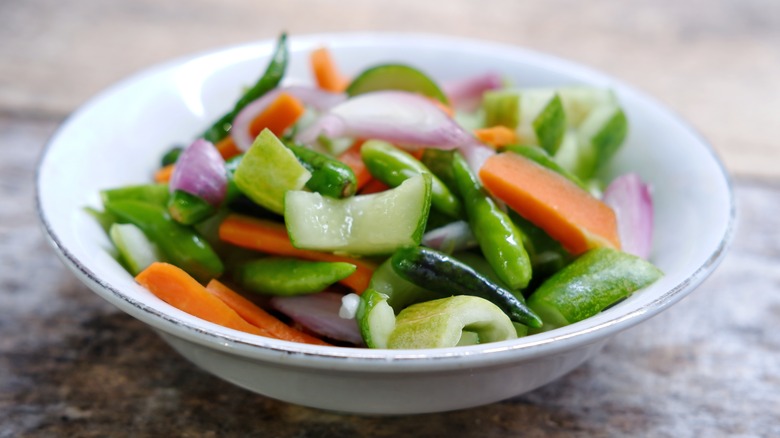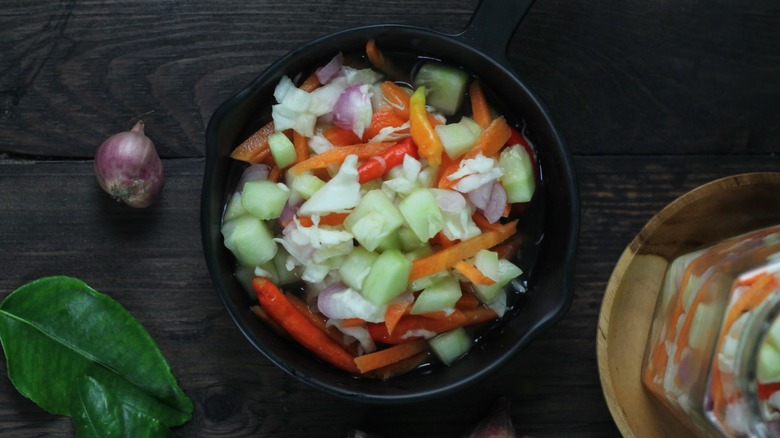Acar Is The Crunchy Pickled Salad From Indonesia You Should Try
Pickling is one of the oldest methods of food conservation, bestowing tasty results with little effect on nutritional content. Pickles aren't just the tangy, crunchy spears that come with a deli sandwich, but instead encompass a vast array of ingredients, spices, and cultural adaptations. Indonesian acar exemplifies the delicious range of ingredients, recipes, and uses that comprise a pickled dish's potential. Acar is an Indonesian adaptation of the ancient Indian pickle called achar; India is the birthplace of pickling, and the country's culinary and cultural influences spread throughout Southeast Asia.
Indonesian acar is a pickled salad that has evolved over centuries to become a typical all-purpose condiment made at home and in bulk to accompany numerous classic dishes. Consisting of carrots, shallots, cucumber, and chilies submerged in a simple mixture of sugar, salt, and vinegar, acar adds a sweet, sour, and salty crunch to all sorts of dishes. Sugar and vinegar provide a sweet and sour solution that enhances the sweetness of the carrots and shallots and complements the spiciness of the Thai chilies. A helping of acar adds depth of flavor and a juicy crunch to savory and spiced meat, fish, or rice dishes.
Ingredients and variations
As with most culinary traditions, different households and regions around Indonesia have different acar recipes. Carrots and cucumbers are constants, but other vegetables like cabbage or beets are also prime candidates. Some recipes replace shallots with garlic and recommend sauteing the aromatics with the vegetables to release their aromas before pickling them. Thai, or bird's eye, chilies are common ingredients, added whole or sliced for a spicy finish. Other recipes add tropical fruit like pineapple or mango to the mix. While the classic acar recipe doesn't require any additional spices or seasonings, ginger, lemongrass, cayenne, and turmeric are often used to add complexity.
Textures and flavor intensities vary depending on preparation and aging times. Some pickled acar salad recipes call for cutting the vegetables into bite-sized chunks, others for julienning, and still others for dicing similar to pico de gallo. The brining solution is also a matter of personal taste, allowing you to alter the ratio of sugar, salt, and vinegar. Furthermore, you can serve acar directly after pickling or after letting the vegetables sit for up to three days. Freshly pickled vegetables will be much crunchier, while aged pickles will be juicier with a more complex flavor profile. Acar is an easy salad to make at home and will last up to a month in the fridge. It would taste great over grilled meats, fried rice, and fish filets, but you could also serve it alongside stewed meats, soups, and curries.

